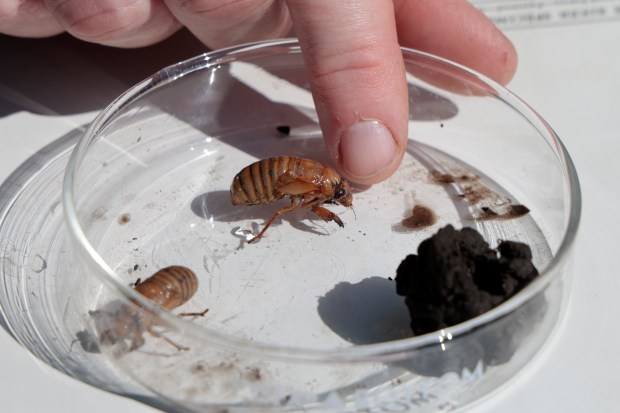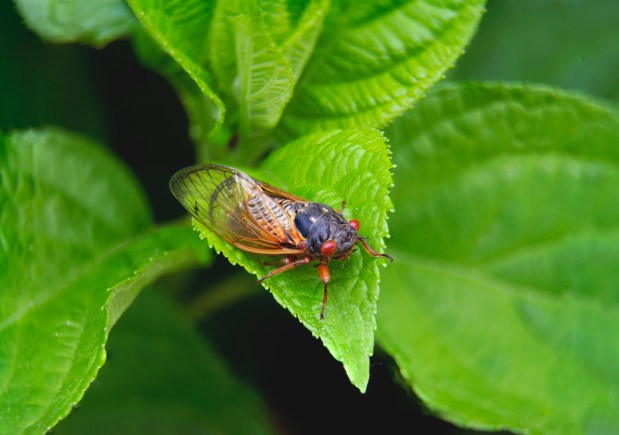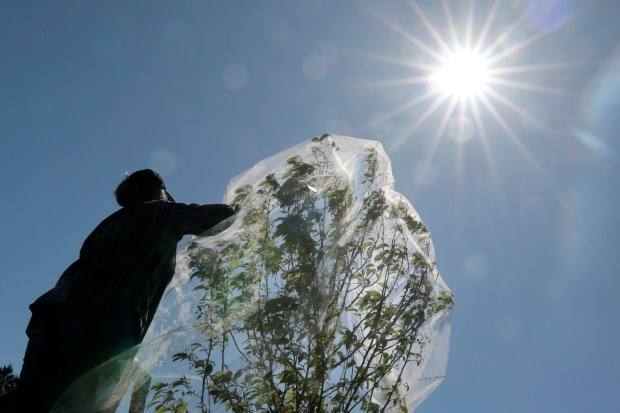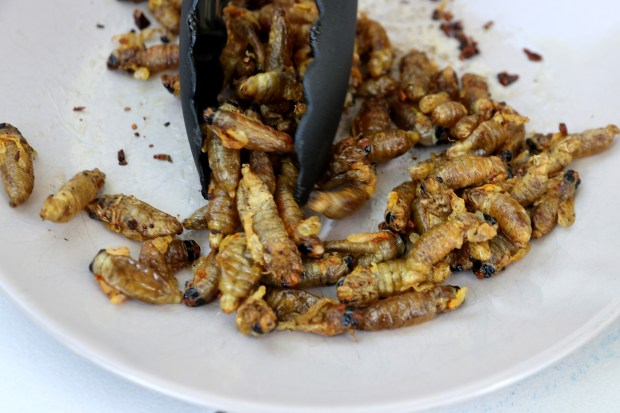They’re loud, but they’re harmless. And some people even like to eat them.
Cicadas are beginning to emerge from the ground around Chicagoland and Illinois. Two broods will converge on the state in a historic emergence. They belong to Brood XIX, four species that appear every 13 years in the Southeast, and Brood XIII, three species that appear every 17 years in northern Illinois.
It will be the first time in 221 years that these two specific broods come above ground at the same time and in such proximity. The last time this happened was in 1803 when Thomas Jefferson was president, and Illinois had yet to become a state.
Depending on where you live in Illinois, the cicadas could be a minor annoyance or a big deal. The 13-year brood is in southern Illinois while the 17-year brood is in northern Illinois.
“While there will be billions of cicadas emerging across the country, there won’t be three-inch piles of them,” said Jamie Viebach, horticulture educator for the University of Illinois Extension in Naperville.
Here’s what to know about the 2024 historic cicada emergence — and take a look back at how the Tribune has covered past cicada emergences.
Illinois will soon be cicada central when 2 broods converge on state in historic emergence
Periodical cicadas exist in only two other countries: One species emerges in the islands of Fiji every eight years, and another one — the “World Cup cicada” — emerges every four years in northeast India, coinciding with the international soccer tournament. Read more here.
Illinois cicadas, loud but harmless, expected to make historic emergence in mid- to late May

Experts consider this year unusual because two broods are co-emerging in neighboring areas in Illinois for the first time in more than two centuries.
“With the weather we’ve been having, there’s some concern that they’re going to be emerging earlier,” Lake Forest College professor Sean Menke said. “And we’re hearing reports from people that they’re finding the tunnel(s) that they dig in the Chicago suburbs.” Read more here.
Yes, cicadas are coming but nothing like the deluge expected in southern Illinois

There’s been a lot of buzz about the unusual emergence of two broods of cicadas in one year, a phenomenon already underway in southern parts of the country and soon be happening in Illinois.
So, yes, there will be a lot of the critters around to make noise this summer, but not necessarily in this area so no need to fear an apocalyptic event here, experts say.
“While there will be billions of cicadas emerging across the country, there won’t be three-inch piles of them,” Viebach said. Read more here.
Vintage Chicago Tribune: Cicada invasion

How did locals handle 17-year cicada invasions of years past? Here’s a look at what we found in the Tribune archives.
Protect your young trees from incoming cicadas

Cicadas will be most abundant in areas with mature trees. New developments and places where there has been soil-disturbing construction in the last 17 years will likely see fewer cicadas.
The only plants that may be vulnerable to cicada damage are young, newly planted trees and some shrubs. “Female cicadas make slits in small twigs and branches to lay their eggs,” said Sharon Yiesla, plant knowledge specialist at The Morton Arboretum, the large tree-focused public garden in Lisle. “On a very young tree, small twigs and branches may be all it has.” Read more here.
You may not be able to escape cicadas — but you can eat them

Insect cuisine is something “we should encourage,” said Maureen Turcatel, collection manager of insects at Chicago’s Field Museum of Natural History. Eating insects, she tells us, is “a very easy way to get a good source of protein” that doesn’t require a lot of resources. Read more here.
Cicadas are protein so why not cook up one or two for the heck of it?
Zach Lemann, curator of animal collections for the Audubon Insectarium, prepared cicadas for eating in April at the insectarium in New Orleans. The insectarium plans to demonstrate ways to cook cicadas at the little in-house snack bar where it already serves other insect dishes. If you are feeling adventurous, looking to add more protein to your diet and aren’t allergic to shellfish, the imminent emergence of cicadas presents a culinary opportunity for you. Read more here.



